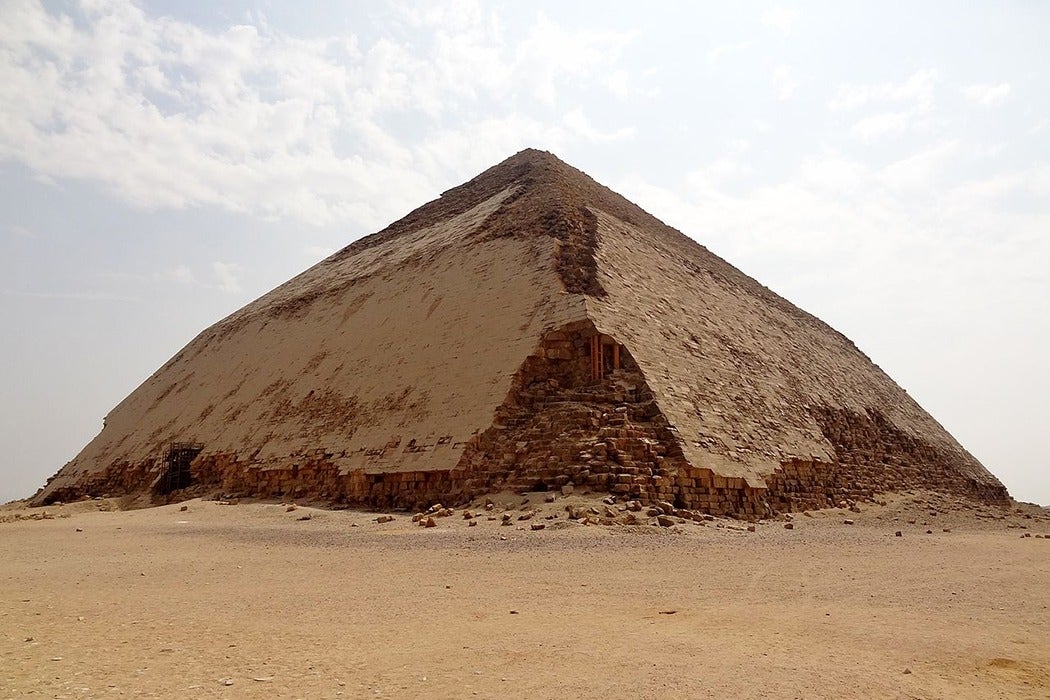Archaeologists working at the ancient Egyptian site of Dahshur recently discovered a lost pyramid. The pyramid is approximately 3,700 years old, dating back to the thirteenth dynasty of Egypt’s Second Intermediate Period. Only below-ground sections were discovered, the actual pyramid part of the structure having long since vanished. Which raises an interesting question: how does a pyramid get lost?
There’s no ready answer, but pyramids often met sticky ends. According to medical physicist Kurt Mendelssohn’s theory, which he published in The Journal of Egyptian Archaeology in the 1970s, there was a period of experimentation in pyramid building techniques during the reign of King Sneferu, and mid-construction collapses informed many of the choices that were made. At Meidum, about 50km from Dahshur, Sneferu tried to cut corners by reducing by half the number of stabilizing buttress walls for a pyramid of that size. The builders then attempted to transform the building into a true pyramid by adding sides to a previously existing step structure. Disaster struck, probably triggered by a heavy downpour, and the addition collapsed, leaving the original step pyramid surrounded by a ring of rubble.
Sneferu pressed on with a new pyramid. Everything started off well, but at some point during construction serious structural flaws emerged. Sneferu’s engineers addressed the problem on the fly, reducing the slope of the sides to prevent collapse. The result is known as the Bent Pyramid, which mostly resembles a pyramid until it abruptly starts leveling off about halfwayup. (Mendelssohn theorized that this might have been a reaction to what happened at Meidum.) Finally, Sneferu perfected his technique with the Red Pyramid, a true, smooth-sided pyramid just north of the Bent Pyramid.

But pyramids faced other threats besides poor engineering. Huge blocks of stone are very useful but take a lot of effort to make and transport. As a result, a huge pyramid full of usable stone was not left alone for long. According to University College London Egyptologist Barbara Gilli, later rulers would appropriate the stones for their own construction, but local residents also routinely used pyramids and temple buildings as quarries. Nor was it just stone; rulers often recycled statues and other artwork by simply chiseling off the previous owner’s name and adding their own. Particularly efficient tomb builders simply renamed the entire monument, something which may have occurred in the newly discovered pyramids.
In the end, it isn’t too hard to imagine a ruined pyramid being completely scavenged for usable materials. The pyramids of Sneferu and the better known Great pyramids at Giza, while robbed of facing stones and valuables, still stand in part because, (weird shapes aside), they were so well built that the effort required to fully dismantle them rivals the immense effort it took to put them up. Over time, that effort was impossible to sustain and later pyramids, such as the new one, were poorly built. By around 1500 BCE, pharaohs abandoned troublesome pyramids altogether and opted for more discreet underground tombs.
Editors’ Note: Some inaccuracies regarding the years of ancient Egypt’s dynasties have been corrected.







